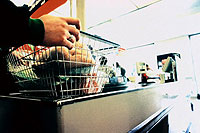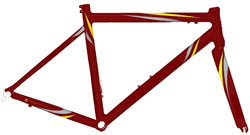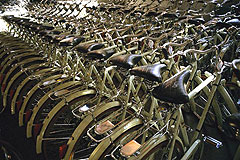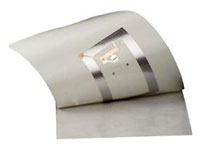How it works: RFID (radio frequency identification)
 Lots of people think of radio frequency identification (RFID), a high-tech way of tracking things, as “a better barcode.”
RFID is a lot more than that. The technology offers major potential benefits to a business's supply chain, for example.
Lots of people think of radio frequency identification (RFID), a high-tech way of tracking things, as “a better barcode.”
RFID is a lot more than that. The technology offers major potential benefits to a business's supply chain, for example.
An RFID tag is an electronic license plate that can be used to track a product – or a box of products – from manufacturing to distribution and shipping, all the way to the client's location, with little need for human intervention and virtually 100 percent accuracy.
Most people are familiar with common RFID applications - such as highway toll collection booths where a scanner reads a tag on your windshield.
 |
A common passive RFID tag. |
An RFID system consists of the tag, or chip, that sits on the item being tracked (i.e. the car on the highway, or a package), a receiver that reads the tags, an antenna that sends out the radio signal, and a computer database that stores all the information read from the tags.
 Imagine a bicycle production line.
Imagine a bicycle production line.
A tiny RFID tag is attached to the bicycle frame as it starts down the production line. The tag is programmed with information line workers will need to build the bike – such as its color, number of speeds, tire size, and final client destination.
As the tag approaches, the workers' computers tell them what to do to the bicycle. When they finish, they can write back to the tag indicating when, where and how the work was done, and by whom.
As bicycles move down the production line, the amount of information on their RFID tags grows. But the tag can hold all that information - and more.
 The RFID receiver continually monitors the facility, placing bicycles in the various stages of production and shipping by reading the license plate information stored on the RFID tags.
The RFID receiver continually monitors the facility, placing bicycles in the various stages of production and shipping by reading the license plate information stored on the RFID tags.
Once a bicycle is finished, it's ready to roll on to the distribution department, where it's packaged and loaded onto a truck. When the bicycle leaves the facility, bound for the client's retail location, the RFID system can alert the retailer that a specific shipment is on the way.
Large, active RFID tags (which can be as large as a brick) can even be tracked in the back of the truck in transit - but doing so is much too expensive for most uses.
 | RFID tags are commonly built right into shipping labels. |